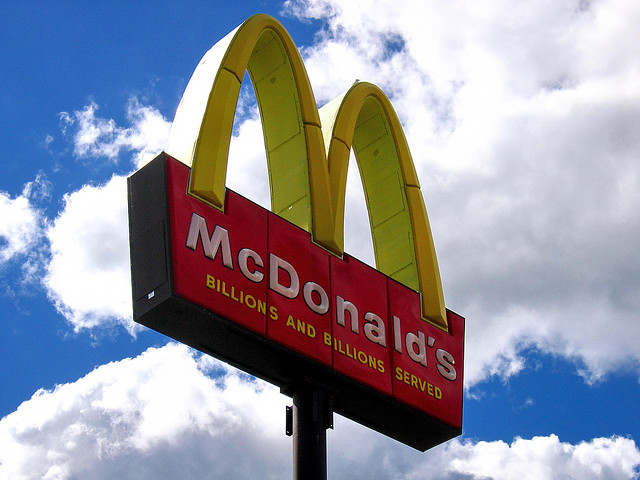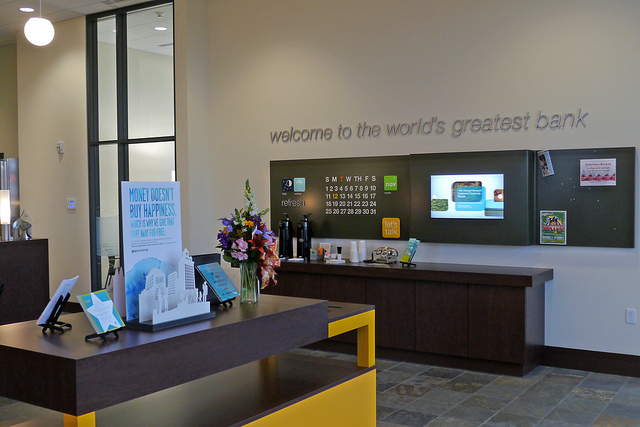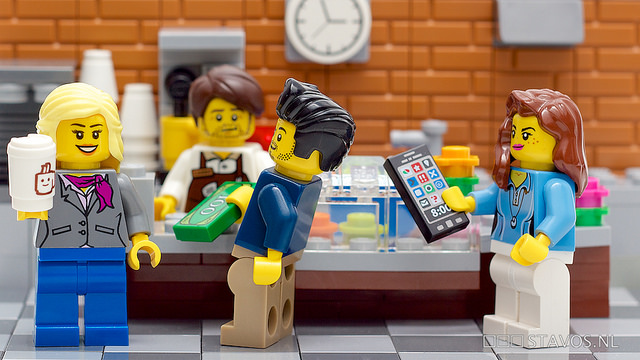Unlock the Magic in Your Story Now
Get the Free 20 questions to Ask Before Launching Your Idea workbook when you sign up for occasional updates.
Get the Free 20 questions to Ask Before Launching Your Idea workbook when you sign up for occasional updates.
Are You Ready To Tell People About You?
filed in Marketing, Storytelling, Strategy
 Have you ever come away from being asked the, ‘so, tell me about you’ question in a professional setting and felt like you nailed it—even just a little bit? How do you sum up the essence of who you are, what you stand for and what you’re capable of without sounding like an over-rehearsed egotist, or alternatively like someone just stuffed your mouth full of cotton wool? The first step is to know who you are and what you stand for and to be comfortable with that. This understanding of your personal story informs your work and it’s something most of us don’t take half enough time to explore. So, tell me about you….
Have you ever come away from being asked the, ‘so, tell me about you’ question in a professional setting and felt like you nailed it—even just a little bit? How do you sum up the essence of who you are, what you stand for and what you’re capable of without sounding like an over-rehearsed egotist, or alternatively like someone just stuffed your mouth full of cotton wool? The first step is to know who you are and what you stand for and to be comfortable with that. This understanding of your personal story informs your work and it’s something most of us don’t take half enough time to explore. So, tell me about you….

Here’s a one-page about you PDF of these questions for you to scribble on so your answers are top of mind next time you need them.
There’s one more thing to consider when you are asked this question though. It turns out that part of the answer lies in understanding why the person is asking the question in the first place. Usually when someone asks ‘about you’ in a business or sales situation, what they really want is a reason to feel safe about the judgement call they are about to make next. Perhaps they are a human resources manager, someone who is accountable to a boss, or maybe a prospective client with a limited budget wondering if you can deliver what they need? What they believe about you and that subsequent decision may impact their future and not just yours.
There are two ways to approach the answer then—the first is to give them the answer they want. The second is to be true to who you are as you gain their trust. It’s tempting to try give the right answer, but it’s far better in the long run to show up as yourself and be hired, invited or validated for the real you, than to sell people on an illusion only to disappoint them later.
Image by Tom Ellefsen.
Share this article
Freedom Is Something You Make
filed in Strategy
 When I was growing up (and maybe when you were too), there were two ways you could earn a living. You could have a job, or have a business. Two clear choices, work for a boss, or be the boss. Career guidance advice went something like this…
When I was growing up (and maybe when you were too), there were two ways you could earn a living. You could have a job, or have a business. Two clear choices, work for a boss, or be the boss. Career guidance advice went something like this…
“Get good grades, to get a qualification, to get a job that enables you to ‘have a life’.”
The subtext was that whoever had the most security from Monday to Friday was the winner. While our teachers had good intentions they never once encouraged us to explore what our definition of ‘having a life’ was. Thirty years on I’m not even sure if asking us to think about work and life in that way would have been going far enough.
The truth is that you don’t have a career, or a business, or a life. You make it. You choose to be the kind of employee or boss that you want to be. You decide what sort of company you want to build, how you want to lead and what legacy you want to leave. And then you create it—actively and intentionally.
You bring it about. You make it happen.
You don’t wait for someone to give you permission to have it.
[Thanks James for inspiring the headline.]
Image by Christian Mayrhofer.
Share this article
What Are Your Customer’s Triggers?
 We mostly think of buying as an isolated act, something our customers do in the moment. But it’s probably more useful to think of buying as a behaviour. A behaviour is an action or reaction which is triggered and conditioned. We look in the fridge at 8pm and notice that we’re running low on milk, that’s our trigger to jump in the car before the supermarket closes. The light turns green and that’s our trigger to go.
We mostly think of buying as an isolated act, something our customers do in the moment. But it’s probably more useful to think of buying as a behaviour. A behaviour is an action or reaction which is triggered and conditioned. We look in the fridge at 8pm and notice that we’re running low on milk, that’s our trigger to jump in the car before the supermarket closes. The light turns green and that’s our trigger to go.
Digital entrepreneurs build products and services with apps, games and platforms for behaviours. Our use of the digital products and platforms we can’t live without is behaviour driven. How long is it before a bored commuter whips out his iPhone while he stands waiting for a bus?
BJ Fogg, who runs the Persuasive Technology Lab at Stanford University, created a simple formula for behaviour change. The Fogg Behaviour Model suggests that three things need to be in place for a behaviour to occur.
TRIGGER—Do this now.
ABILITY—Can do it.
MOTIVATION—Want to do it.
Marketers of physical products have been slower to recognise buying as a behaviour. As marketers we often think of buying as an exchange that customers can be persuaded into with discounts and special offers. Savvy marketers see buying as a behaviour that they have the power to influence with triggers and not just persuasion. Starbucks built a billion dollar business by creating and leveraging triggers for able and motivated customers. Warby Parker changed the buying trigger for people who needed prescription glasses who only bought a new pair once every two years when their prescription ran out. Black Milk Clothing releases limited edition, time limited ranges. Apple’s product launches are triggers of legend.
Triggers lead to actions that can become behaviours. As marketers we spend a lot of time focusing on our customer’s motivation and ability, but as Fogg mentions we need all three things to be in place to create behaviours and it’s those behaviours that build sustainable businesses. Perhaps we need to start thinking more like great user experience designers?
Don’t just focus on the moment your customer pulls out her credit card. Think about how, why and how often she got to that point and how you might influence that in the future.
Image by Amanda Tipton.
Share this article
The Business Case For Creating Great Customer Experiences
 Saren Indah is a tiny fifteen room hotel in Ubud. It’s hard to stand out from the crowd in a market where amazing seven star resorts line up alongside cheaper than cheap backpacker accommodation. How do you differentiate when you are not the biggest, flashest or cheapest? Saren Indah should be lost in the mediocre middle, and yet year upon year this family run hotel is booked out months in advance and tops Trip Advisor rankings by excelling at customer service and giving visitors a story to tell.
Saren Indah is a tiny fifteen room hotel in Ubud. It’s hard to stand out from the crowd in a market where amazing seven star resorts line up alongside cheaper than cheap backpacker accommodation. How do you differentiate when you are not the biggest, flashest or cheapest? Saren Indah should be lost in the mediocre middle, and yet year upon year this family run hotel is booked out months in advance and tops Trip Advisor rankings by excelling at customer service and giving visitors a story to tell.
The cost of poor customer service in the U.S. alone is $83 billion per year.
70% of our customers leave never to return because they were not made to feel like they mattered. Of course they don’t just vanish into the ether, they go to the competition. So poor service not only damages our bottom line, it also widens the gap between us and our competitors.
We spend hundreds of billions of dollars every year trying to get people to notice us and once we get them through the door we don’t take care of them. In a world with so many choices it’s no longer good enough to show up and open the door. Smart marketers understand that it’s how the door is opened that matters.
Image by Seagers.
 All around us big vanilla businesses and corporations are struggling to understand how to connect with customers and give people what they want. Businesses like McDonalds are
All around us big vanilla businesses and corporations are struggling to understand how to connect with customers and give people what they want. Businesses like McDonalds are  Having a competitive advantage is not just about being better in ways that can be measured, it’s about
Having a competitive advantage is not just about being better in ways that can be measured, it’s about  The fare on sale at the coffee window of our local cafe changes each morning.
The fare on sale at the coffee window of our local cafe changes each morning. Why do some shoppers choose to pay $3.48 for a 500g bag of Quaker oats when they can buy a kilo of supermarket own brand oats for $3.29, which works out at less than half the price?
Why do some shoppers choose to pay $3.48 for a 500g bag of Quaker oats when they can buy a kilo of supermarket own brand oats for $3.29, which works out at less than half the price? I arranged to meet one of my Twitter friends for the first time in the little bar at the front of my hotel. He is a designer from London and as luck would have it we were visiting New York at the same time, (something we discovered through our simultaneous posts of Times Square on Instagram).
I arranged to meet one of my Twitter friends for the first time in the little bar at the front of my hotel. He is a designer from London and as luck would have it we were visiting New York at the same time, (something we discovered through our simultaneous posts of Times Square on Instagram). There’s a problem with how performance is measured by both ourselves and in our organisations. Typically you have a budget and targets to achieve. The purpose of the budget is to make sales go up, or waiting times go down. Our systems are designed to judge and reward us on results. If the campaign you authorised sold more t-shirts last quarter then that’s a win. But if the only way you can get sales to go up is to spend money on a campaign to make sales go up, then you’re going to have to keep spending money on campaigns to make sales go up.
There’s a problem with how performance is measured by both ourselves and in our organisations. Typically you have a budget and targets to achieve. The purpose of the budget is to make sales go up, or waiting times go down. Our systems are designed to judge and reward us on results. If the campaign you authorised sold more t-shirts last quarter then that’s a win. But if the only way you can get sales to go up is to spend money on a campaign to make sales go up, then you’re going to have to keep spending money on campaigns to make sales go up.